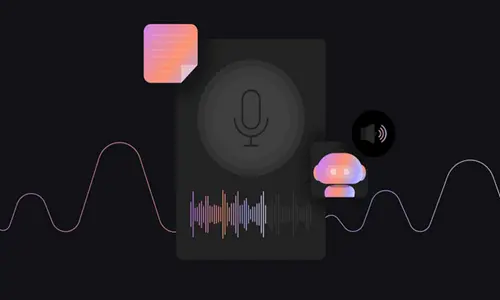In recent years, technological advancements have significantly transformed the way we create and consume media. Among these innovations, artificial intelligence (AI) has made a profound impact, particularly in the realm of video content creation. AI voice generators, which create synthetic voices that sound remarkably human, have emerged as powerful tools for enhancing accessibility in videos. This article explores the impact of AI voice generators on accessibility, highlighting the benefits, challenges, and future potential of this technology.

Understanding AI Voice Generators
AI voice generators, also known as text-to-speech (TTS) systems, utilize deep learning algorithms to convert written text into spoken words. These systems are trained on vast datasets of human speech, enabling them to produce natural-sounding voices. Advanced AI voice generators can even replicate the nuances of human speech, including intonation, emotion, and accents. This capability has opened up new possibilities for creating more engaging and accessible video content.
Enhancing Accessibility with AI Voice Generators
Accessibility in video content is crucial for ensuring that all individuals, regardless of their abilities, can access and enjoy the information being presented. AI voice generators play a vital role in achieving this goal by providing several key benefits:
1. Breaking Language Barriers
One of the most significant advantages of AI voice generators is their ability to support multiple languages. By generating voiceovers in various languages, AI can make video content accessible to a global audience. This capability is particularly valuable for educational videos, corporate training materials, and entertainment content, as it allows creators to reach a broader and more diverse audience.
2. Assisting the Visually Impaired
For individuals with visual impairments, AI voice generators can convert written content into audible speech, making videos more accessible. This includes not only the spoken dialogue within the video but also subtitles, descriptions, and other on-screen text. By providing an audio alternative to visual information, AI voice generators ensure that visually impaired individuals can fully engage with the content.
3. Improving Comprehension for Dyslexic Individuals
People with dyslexia often struggle with reading text, which can make it challenging to consume written content in videos. AI voice generators can read aloud the text, providing an auditory aid that improves comprehension and retention. This is particularly beneficial in educational settings, where students with dyslexia can access the same materials as their peers without feeling disadvantaged.
4. Enhancing User Experience for All
AI voice generators can enhance the overall user experience by providing clear, consistent, and engaging narration. For instance, instructional videos, e-learning courses, and explainer videos can benefit from high-quality voiceovers that maintain viewer interest and convey information effectively. Additionally, AI-generated voices can be customized to match the tone and style of the content, creating a more cohesive and enjoyable viewing experience.
The Role of AI Voice Characters in Video Content
AI voice characters are synthetic voices that can be programmed to adopt specific personas or characters. These characters can add a layer of personalization and entertainment to video content, making it more engaging and relatable. Here are some ways AI voice characters are being utilized:
1. Educational Content
In educational videos, AI voice characters can assume the roles of teachers, narrators, or even fictional characters to explain concepts in a fun and interactive manner. This approach can make learning more enjoyable and effective, especially for younger audiences who may respond better to animated or character-driven content.
2. Entertainment and Animation
AI voice characters are increasingly used in animation and entertainment to provide voices for animated characters. This technology allows creators to produce high-quality voiceovers without the need for human voice actors, reducing production costs and time. Moreover, AI voice characters can be easily modified and updated, providing flexibility in content creation.
3. Corporate Training and Presentations
In corporate settings, AI voice characters can be used to deliver training materials, presentations, and onboarding content. By using a consistent and professional voice, companies can ensure that their messaging is clear and uniform across different materials. Additionally, AI voice characters can be customized to reflect the company’s brand personality, enhancing the overall training experience.
Challenges and Considerations
A Generative AI Course provides in-depth knowledge of cutting-edge artificial intelligence techniques that create new content, such as images, text, audio, or videos. This course typically covers foundational concepts like neural networks, deep learning, and algorithms like GANs (Generative Adversarial Networks) and transformers. While AI voice generators offer numerous benefits, there are also challenges and considerations to keep in mind:
1. Accuracy and Naturalness
One of the primary challenges with AI voice generators is achieving a high level of accuracy and naturalness in the generated speech. While advanced systems can produce remarkably human-like voices, there are still instances where the speech may sound robotic or unnatural. Continuous improvements in AI algorithms and training datasets are necessary to address these issues.
2. Cultural Sensitivity and Inclusivity
AI voice generators must be designed to handle cultural nuances and inclusivity effectively. This includes accurately representing different accents, dialects, and speech patterns. Ensuring cultural sensitivity in AI-generated voices is essential to avoid stereotyping and to provide a respectful and inclusive experience for all users.
3. Data Privacy and Security
AI voice generators rely on large datasets of human speech to function effectively. It is crucial to address data privacy and security concerns, ensuring that the data used to train these systems is obtained ethically and protected against misuse. Transparency in data usage and adherence to privacy regulations are essential to maintaining user trust.
4. Ethical Considerations
The use of AI voice generators raises ethical considerations, particularly regarding the potential replacement of human voice actors. While AI can offer cost and efficiency benefits, it is important to balance these advantages with the potential impact on the job market for voice actors. Ethical guidelines and fair practices should be established to ensure that AI complements rather than displaces human talent.
Future Potential of AI Voice Generators
The future of AI voice generators holds immense potential for further enhancing accessibility in video editing. As technology continues to evolve, several exciting developments are on the horizon:
1. Real-Time Voice Translation
Future advancements in AI voice generators may enable real-time voice translation, allowing video content to be instantly translated and dubbed in multiple languages. This capability would be a game-changer for global communication, breaking down language barriers and enabling seamless interaction across different cultures.
2. Personalized AI Voice Assistants
Personalized AI voice assistants could become more prevalent, offering tailored and context-aware interactions within videos. These assistants could provide additional information, answer questions, and guide users through the content, enhancing the overall accessibility and user experience.
3. Emotionally Intelligent Voices
Developments in emotional AI could lead to voice generators that can recognize and convey emotions more accurately. Emotionally intelligent voices would enhance the relatability and engagement of video content, making it more impactful and memorable for viewers.
4. Increased Customization
As AI voice generators become more sophisticated, users will have greater control over customizing the voices to match their specific needs. This includes adjusting the tone, pace, and style of the voice, as well as creating unique character voices that align with the content’s theme and audience.
Conclusion
AI voice generators are revolutionizing the way we create and consume video content, offering significant benefits for accessibility. By breaking language barriers, assisting visually impaired individuals, improving comprehension for dyslexic individuals, and enhancing the overall user experience, AI voice generators are making videos more inclusive and engaging for all.
The use of AI voice characters further adds a layer of personalization and entertainment, making educational, corporate, and entertainment content more relatable and enjoyable. While challenges such as accuracy, cultural sensitivity, data privacy, and ethical considerations must be addressed, the future potential of AI voice generators is promising.
As technology continues to advance, AI voice generators will play an increasingly vital role in creating accessible and engaging video content. By embracing these innovations, we can ensure that everyone, regardless of their abilities or language, can fully participate in and enjoy the wealth of information and entertainment available through videos.

